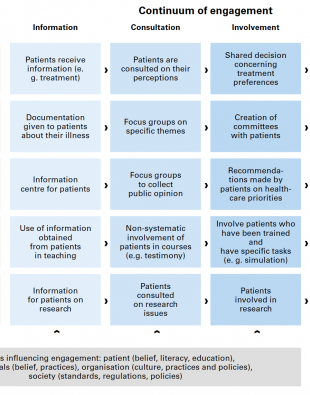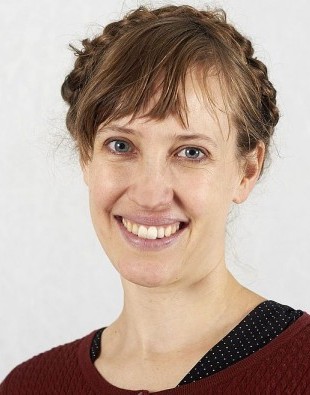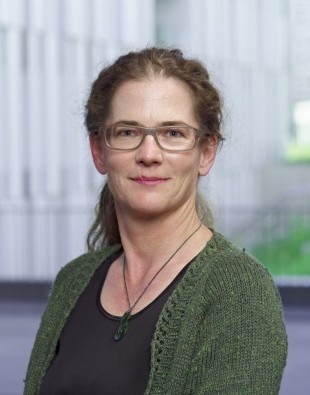
“Nothing about us without us”
Nov. 2019Engaging with patients
Betroffene. A Patient and Family Advisory Board has been set up to support further implementation of the “Promoting self-management in non-communicable diseases, addiction and mental illness” project. This step reflects the project’s philosophy of “Nothing about us without us”.
A very special meeting took place at the FOPH in Bern on 18 June 2019: the first gathering of the seven-member Patient and Family Advisory Board (PFAB). One of the Board members is office worker Anna Troelsen, who was diagnosed with juvenile idiopathic arthritis – a severe inflammatory disease – at the age of 14. Since then she has been searching for the right treatment. On top of this, she also has scoliosis and cortisone-induced osteoporosis. Also on the Board is Martin Stucky, who was placed in foster care as a child and later developed a borderline personality disorder. While the seven members may have travelled different paths, they all have one thing in common: each is either affected by disease themselves or has had equivalent first-hand experience as the relative of someone with a disease. As part of its “Promoting self-management in non-communicable diseases, addiction and mental illness” project (see box), the FOPH invited these Board members to contribute their perspectives and experiences as patients and family members. Between them, the seven members cover all of these areas.
Nadine Stoffel-Kurt, FOPH project manager and co-initiator of the PFAB, had this to say about the first meeting: “Everyone was very motivated and keen, and the discussion was wide-ranging and enriching for us all. We let our work be guided by our ‘Nothing about us without us’ slogan.” This slogan is intended to express the idea that professionals should always encounter patients and their families on an equal footing, and that expert theory should never be implemented without involving real-world experts.
Engaging with patients and their families in this way is still more of an exception at the FOPH. There are various reasons for this. Firstly, it is not always easy to find people who have been affected, and secondly, the FOPH has traditionally tended to work with health organisations and associations rather than with individuals with first-hand experience. Furthermore, processes like this often create a substantial amount of extra work. People need to be recruited and a communication flow has to be established and maintained between all stakeholders. And running a board of this kind is time-consuming.
Nevertheless, all the work pays off. “It’s definitely worthwhile”, says Stoffel-Kurt. “After all, we want interventions to be effective, which means they have to be adapted to their target groups. Those of us working in the field benefit from a different perspective, one that we may not have been aware of before.” The members of the PFAB also benefit by helping to bring about tangible improvements and sharing their experiences with professionals in the field.
What needs to be borne in mind when engaging with patients and their families? “The important thing is to acknowledge the contribution that patients and their families make, for example by paying them an attendance fee for meetings.” The professionals represent their particular institution and contribute to boards and committees as part of their work – a task for which they receive compensation. This is generally not the case with patients and their families, who take part out of personal commitment and do the work associated with membership in their free time. “So payment represents an important way of recognising their work.”
Working together as equals
Strengthening self-management among patients and their relatives is one of the measures in the NCD strategy.The measure will be implemented in three steps. In the first step, a reference framework was created to promote a shared conceptual approach and mindset among stakeholders. The second step involved setting up a stakeholder platform as a forum for dialogue among stakeholders. During this step, it became clear that patient engagement is crucial in ensuring that the SELF platform can fulfil its tasks correctly. Implementing measures (step 3) without patient engagement is unthinkable in self-management promotion, which is why preparations to set up the PFAB were set in motion. Organisationally, the PFAB is on the same (operational) level as the core team. It has the same powers and tasks as the core team, including annual planning, designing the platform event and communication resources, etc. To ensure communication flow between the core team and PFAB, one person from the PFAB communicates input from the board within the core team. Moreover, as an important indicator of commitment to participation, one person from the PFAB is a member of the steering group, the platform’s highest management level. This type of organisation is completely new and a first step to greater patient engagement. Experience will indicate where adjustments need to be made.




